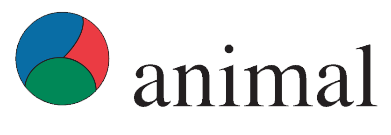Document type: Scientific journal published in Animal
Authors: F. Liu, W. Zhao, H.H. Le, J.J. Cottrell, M.P. Green, B.J. Leury, F.R. Dunshea, A.W. Bell
Review: What have we learned about the effects of heat stress on the pig industry?
Preview: Pig production faces seasonal fluctuations. The low farrowing rate of sows mated in summer, increased carcass fatness of progeny born to the sows mated in summer, and slower growth rate of finisher pigs in summer are three economically important impacts identified in the pig industry. The purpose of this review is to examine advances over the past decade in understanding the mechanisms underlying the three impacts associated with summer conditions, particularly heat stress (HS), and to provide possible amelioration strategies. For impact 1, summer mating results in low farrowing rates mainly caused by the high frequency of early pregnancy disruptions. The contributions of semen DNA damage, poor oocyte quality, local progesterone concentrations, and suboptimal embryonic estrogen secretion are discussed, as these all may contribute to HS-mediated effects around conception. Despite this, it is still unclear what the underlying mechanisms might be and thus, there is currently a lack of commercially viable solutions. For impact 2, there have been recent advances in the understanding of gestational HS on both the sow and foetus, with gestational HS implicated in decreased foetal muscle fibre number, a greater proportion of lighter piglets, and increased carcass fatness at slaughter. So far, no effective strategies have been developed to mitigate the impacts associated with gestational HS on foetuses. For impact 3, the slowed growth rate of pigs during summer is one reason for the reduced carcass weights in summer. Studies have shown that the reduction in growth rates may be due to more than reductions in feed intake alone, and the impaired intestinal barrier function and inflammatory response may also play a role. In addition, it is consistently reported that HS attenuates fat mobilisation which can potentially exacerbate carcass fatness when carcass weight is increased. Novel feed additives have exhibited the potential to reduce the impacts of HS on intestinal barrier function in grower pigs. Collectively, based on these three impacts, the economic loss associated with HS can be estimated. A review of these impacts is warranted to better align the future research directions with the needs of the pig industry. Ultimately, a better understanding of the underlying mechanisms and continuous investments in developing commercially viable strategies to combat HS will benefit the pig industry.




